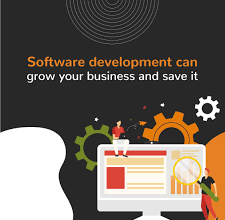DeepSeek-R1: The Open-Source AI That Shook Silicon Valley—and Blew $460 B Off Nvidia


The world of artificial intelligence is full of surprises, but nothing has shaken the industry quite like the arrival of DeepSeek-R1. This open-source AI model came into the spotlight with massive attention because of its performance, speed, and affordability. Unlike many closed systems, DeepSeek-R1 shows what a community-driven project can do when it aims high. Its impact was so powerful that it sent shockwaves through Silicon Valley and even contributed to wiping out hundreds of billions in market value from one of the biggest tech players, Nvidia.
The Rise of Open-Source AI
Artificial intelligence has always been dominated by big names. Companies with large budgets and advanced computing power held the advantage. But DeepSeek-R1 is a reminder that innovation does not only belong to giant corporations. By being open-source, it invites developers, researchers, and businesses worldwide to build upon it without facing the heavy costs that usually come with proprietary AI models.
This openness creates a new balance. Instead of depending on closed systems, anyone with the right skills can use DeepSeek-R1 to design smarter tools, create new apps, and improve automation. It’s not just about saving money; it’s about giving people the power to shape the future of AI themselves.
Why DeepSeek-R1 Stood Out
Many AI models exist, but DeepSeek-R1 caught attention for several reasons. First, it showed strong reasoning skills that rival top commercial products. Second, it performed tasks with lower resource needs, which made it more accessible. Third, it highlighted the speed at which open-source projects can evolve when fueled by a global community of contributors.
This combination made DeepSeek-R1 more than just another release. It turned into a symbol of disruption. By being open, fast, and effective, it challenged the traditional way AI progress was controlled.
The Nvidia Effect
One of the biggest shocks tied to DeepSeek-R1 was its effect on Nvidia, the tech giant known for producing the most powerful chips for AI training. Nvidia’s growth has been driven by the idea that AI will always need massive computing resources, which in turn means more demand for its GPUs.
But DeepSeek-R1 told a different story. It proved that strong AI models can run without depending fully on expensive hardware setups. This raised doubts in investors’ minds about whether Nvidia’s growth could keep its pace. The result was a huge hit to its market value, with billions lost in just a short time.
While Nvidia is still a leader in hardware, the message was clear: the AI future may not only rely on giant chip investments. Smarter, more efficient models can rewrite the rules.
Open-Source vs Closed AI
The rise of DeepSeek-R1 also sparked a bigger debate in the AI community. Closed models like GPT-5 or Gemini are powerful, but they come with limits. You need to pay for access, trust the provider, and often cannot see how the model truly works.
On the other hand, DeepSeek-R1 is open. Developers can study its structure, learn from it, and improve it. Businesses can use it freely without facing strict licensing costs. Researchers can test and adapt it without waiting for approvals. This transparency gives it credibility and builds trust among users who want control over their tools.
The Global Developer Movement
DeepSeek-R1’s success also shows how global collaboration can compete with even the biggest tech firms. Developers from different countries have contributed to making it better. They test, adjust, and share improvements. This spirit of teamwork accelerates growth in ways that closed teams cannot match.
It’s also a chance for smaller businesses to join the AI race. Instead of paying huge sums for AI access, they can use DeepSeek-R1 to build their own customer service bots, research assistants, or productivity tools. The result is wider adoption of AI in industries that were once locked out.
What This Means for the Future of AI
The arrival of DeepSeek-R1 proves that AI is no longer limited to a few companies. It signals a shift where open-source innovation can lead the way. In the coming years, we may see even more models like DeepSeek-R1 challenging both big tech and traditional business models.
For users, this means more choice. You can decide whether you want a closed, polished system or an open, adaptable one. For businesses, it means rethinking strategies and staying flexible. And for researchers, it means having access to tools that inspire new ideas without being blocked by cost barriers.
Challenges Ahead
Of course, DeepSeek-R1 is not without its challenges. Open-source projects need consistent support, and quality control can sometimes be harder compared to closed systems. There are also security concerns when anyone can modify and distribute code.
But with a strong community, these challenges can be managed. The fact that DeepSeek-R1 has already created such a big impact shows that people believe in its long-term potential.
The Larger Impact on Silicon Valley
Silicon Valley has always been the center of technology innovation. Yet DeepSeek-R1 proves that the next big wave may not always come from within its borders. When open-source tools reach global scale, they reduce the advantage of having billions in research budgets.
This does not mean big tech companies will disappear. Instead, they will have to adapt. They may open more of their tools, partner with open-source groups, or adjust their pricing to stay relevant. The market is now more competitive, and that benefits everyone.
Conclusion
DeepSeek-R1 is more than just another AI release. It is a turning point. By being open-source, it disrupted the usual way of doing things in Silicon Valley. By being efficient, it questioned the hardware-heavy future that companies like Nvidia were counting on. And by creating a global movement, it showed that AI belongs to everyone, not just a few.
The story of DeepSeek-R1 is a reminder that innovation thrives when knowledge is shared. Whether you are a developer, a business owner, or simply someone interested in AI, the rise of this model proves that the future of technology will be shaped by both giants and communities working together.
Open‑Source AI That Shook Silicon Valley




